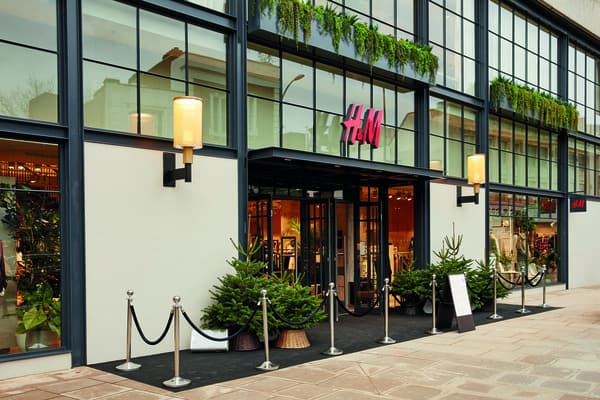H&M’s Q1 results show better than expected sales, with across March alone up 55%. Over the entire quarter, sales are down 21% on the previous year, driven by 36% of the retailer’s stores being shut due to lockdowns. Online has continued to develop and grow.
The group’s net sales amounted to SEK 40,060 m (€54,948m) in the first quarter. In local currencies, net sales decreased by 21%. The second wave of the pandemic resulted in extensive restrictions, with as many as 1,800 stores temporarily closed – around 36% of the group’s total number of stores–
Online sales continued to develop very well. Gross profit amounted to SEK 19,057m (€28,034m). This corresponds to a gross margin of 47.6%.
Helena Helmersson, CEO H&M Group, comments: “It is now a year since the full force of the pandemic hit. I am deeply impressed by and proud of all our colleagues’ fantastic commitment and customer focus during a very challenging time. Although it is still largely a matter of managing the negative effects of recurring store closures, it is clear that customers appreciate our offering. When markets have been allowed to open, store sales have picked up while at the same time online sales have continued to develop very well.”
She adds: “Our digital initiatives are continuing, along with the development of our physical store network. We can see that customers both want to be able to see, feel and try on the garments in real life and to use digital channels to explore fashion, be inspired and shop. Looking ahead, we will strengthen the interaction between the channels further in order to offer customers the best experience with all of our brands.”
The results, however, are tempered by the ongoing coronavirus surge in Europe. According to Richard Chamberlin, an analyst at RBC Insight Research, “having had a strong run-up until mid March, [we think] the H&M share price has corrected due to its store reopening narrative going into reverse”.
Loyalty and sustainability
While shifting to a more online-led omni-channel business model, the retailer has also revamped its sustainability and loyalty programmes to meet the changing demands of its customers.
During Q1 21, the group issued a €500m sustainability-linked bond with the aim of financing, among other things, an accelerated transition to recycled materials. The bond, which was 7.6 times oversubscribed, has a term of 8.5 years and a coupon rate of 0.25%. The group’s sustainability report, Sustainability Performance Report 2020 will be published today at hmgroup.com.
On the loyalty front, H&M has made some other significant changes to its scheme which has more than 120 million members in 26 markets. Now its members can get points for more conscious choices such as bringing in old clothes for H&M’s garment collecting, choosing climate-smart delivery options, bringing their own bag when shopping and choosing products made from more sustainable materials.
Helmersson comments: “The changes that we were already seeing in areas such as digitalisation and sustainability have been speeded up further by the pandemic. We have therefore increased the pace of change, and thanks to our significant investments in recent years we are able to meet customers’ changing behaviour and higher expectations with increasing speed.”
She concludes: “Our customer base is growing and one example of this is the rapid increase in the number of members of H&M’s customer loyalty programme. While we are humbled by the uncertainty that still exists due to the pandemic, it is fantastic to see the great interest that customers are showing in our collections. With a well-positioned customer offering we are continuing our transformation at full speed in order to create long-term sustainable and profitable growth for the H&M group.”
China crisis
In China, H&M and several other Western brands have come under scrutiny and social pressure as a result of their commitments to ethical and responsible sourcing, specifically with regards to cotton sourced from the Xinjiang Uyghur Autonomous Region (XUAR).
RBC’s Chamberlin believes, however, that H&M can move past this. “We have seen brands like Nike and H&M weather similar controversies in the past and maintain relatively strong sales, however short term we think H&M may see a negative impact on its sales in the large and growing Chinese market – around .6% of group sales,” he says.
Learn more about H&M, sustainability and the wider impact of Covid-19 on fast fashion in the RetailX Fashion Sector report 2021









